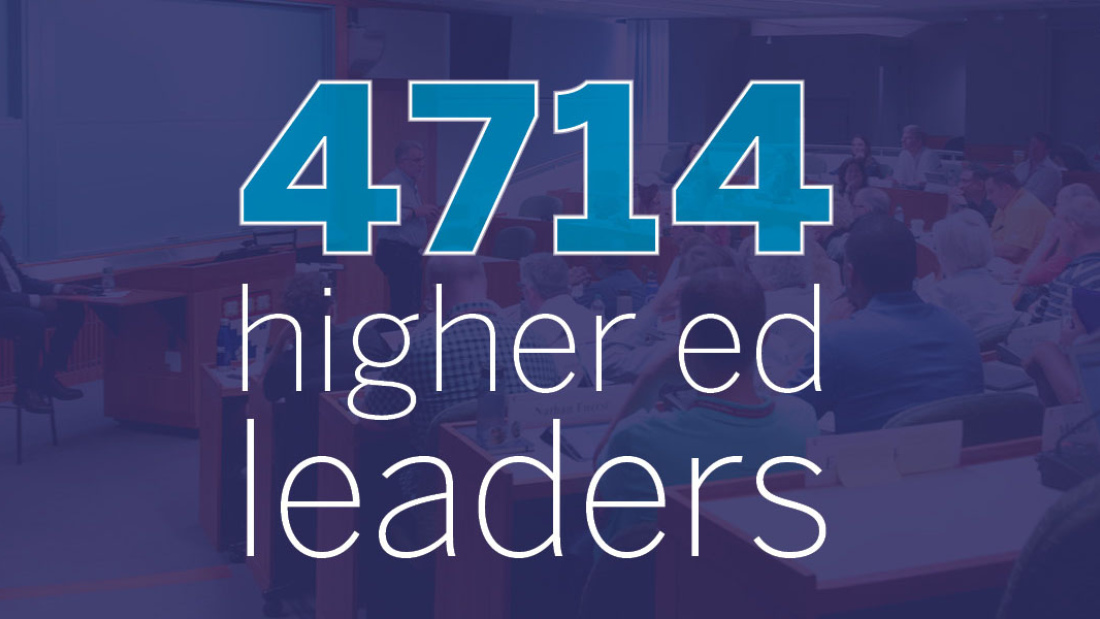Shaping the Higher Ed Landscape

HGSE recognized early on that senior leaders in higher education face unique challenges on the job — and that they need a special place to devote time and energy to their own professional learning. When Harvard faculty created the Institute of Educational Management (IEM) in the 1970s, it became the first immersive leadership development course specifically for senior higher ed leaders. It also paved the way for future HGSE professional learning programs aimed at college presidents and rising higher-ed managers, a portfolio collectively known as the Harvard Institutes for Higher Education.
The new institute soon found its audience. By the close of IEM’s first decade, more than 1,000 educators from 400 institutions had attended the program.
The Institute of Educational Management — an immersive learning space that became a summer home for generations of college and university leaders.
From its inception, it stressed the importance of growth and innovation; of remaining relevant in the field as students’ academic, personal, and professional needs changed; and of diversity and inclusion efforts, including recruiting women and people of color to leadership roles in higher education. In doing so, IEM shaped a new kind of education leader and focused their work on the field’s most significant challenges.
Now in its 50th year, IEM has drawn more than 4,700 educators into its network, earning the program a reputation as “one of the best investments you can make” for its ability to yield actionable insight and real-world connections to leaders’ work in their everyday settings. Some of the most distinguished and skilled professionals in the sector have attended the program, bringing back to their home campuses new strategic direction, ideas on competing successfully in a dynamic marketplace, guidance on embracing the right emerging technologies, strategies for supporting student success, and inspiration for how to leverage diversity and create an inclusive community.
The promise of IEM is disarmingly simple, even if the work is hard. “IEM will make you a better leader,” says James Honan, a senior lecturer at HGSE and longtime faculty co-chair and ambassador for the program. “And, in the process, it will make your institution a better place for teaching and learning.”
IEM continues to deliver on that promise. And it’s done something more, as well. By providing a cohort-based experience — a space for higher ed leaders to lower their guard, explore their strengths and vulnerabilities, and do the deep and hard work of learning to trust and to risk — IEM has built a community of empathetic and confident leaders. Long after their sessions in Cambridge wrap up, they continue to turn to one another — and to the program’s faculty — for support and camaraderie. It’s in those intangibles that IEM makes its deepest impact.
“The Institute for Educational Management remains a singular convening in higher education. I often reflect on how unique an opportunity it is to have 100 institutional leaders, from across the nation and the world, grapple with thorny leadership challenges while creating a community of support that endures well beyond our time on Appian Way in the summer,” says Richard Reddick, Ed.M.'98, Ed.D.'08, associate dean for equity, community, engagement, and outreach at the University of Texas at Austin and faculty co-chair of IEM. “The IEM 50 celebration drove home the impact of our work — to see generations of leaders come back to HGSE and reflect on their careers, and convene and plan for the future is inspiring.” – Jill Anderson
Learn More and Connect
Read "The Enduring Impact of IEM."
Watch an Askwith Forum marking the 50th anniversary of IEM.
Explore the Harvard Institutes for Higher Education, HGSE's portfolio of professional learning programs for college and university administrators.
